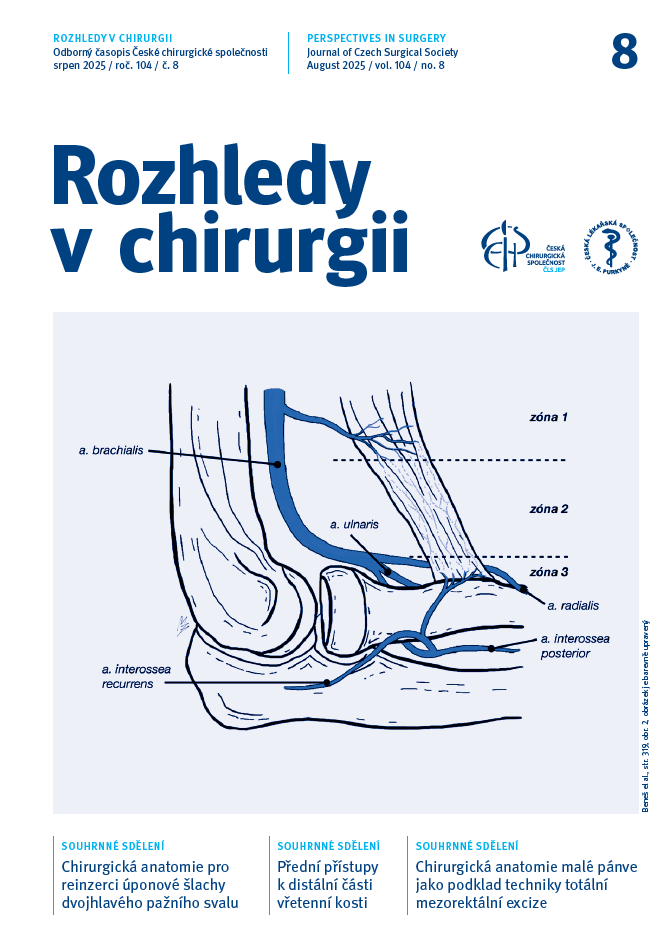Abstract
The technique of total mesorectal excision (TME) has become a widely accepted component of rectal cancer resection since its introduction in the 1980s. The quality of TME remains the only way for a surgeon to influence the oncological outcomes of surgical treatment for rectal cancer. A thorough understanding of the surgical anatomy of the pelvis, particularly the pelvic fasciae, vascular supply, and lymphatic drainage of the rectum, is essential for the proper technique of TME. Functional outcomes of rectal resections also depend on meticulous dissection and respect for the anatomy of the pelvic autonomic nerve plexuses. In this article, the authors define the key anatomical structures and terms, including lesser-known eponyms commonly used in rectal surgery. Finally, they describe the TME procedure based on the surgical anatomy of the pelvis, emphasizing the importance of respecting the developmental tissue planes and anatomical structures involved.
doi: 10.48095/ccrvch2025339


